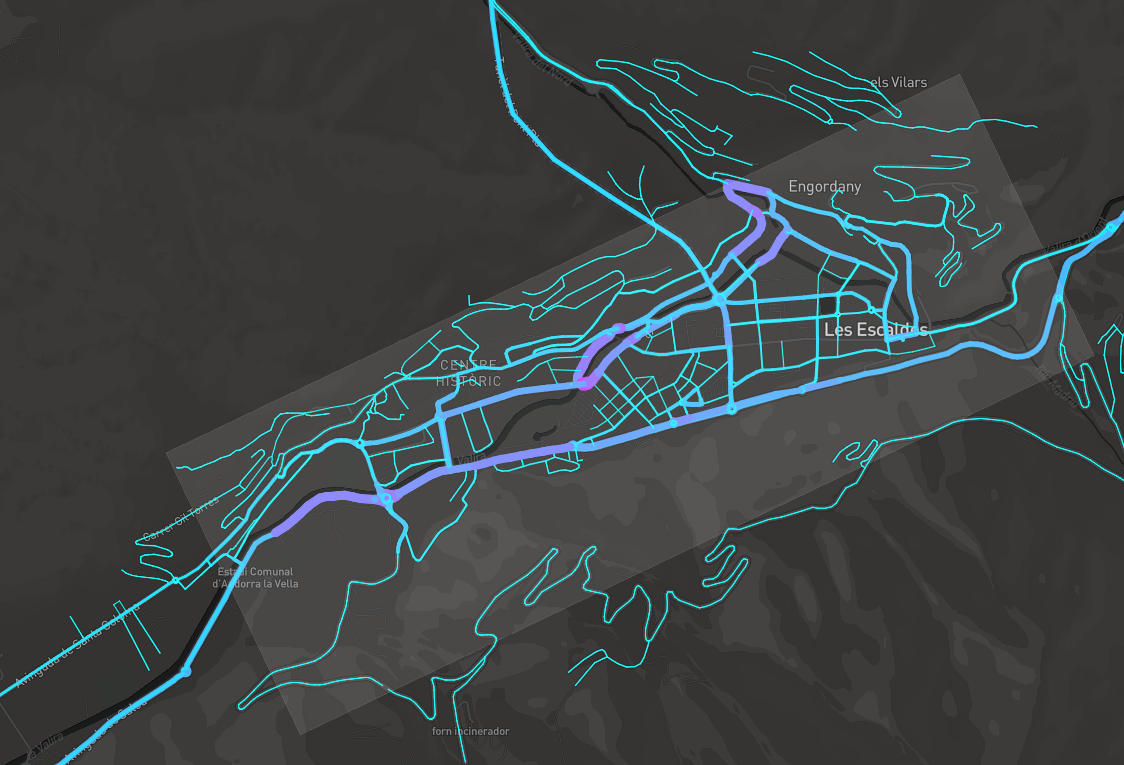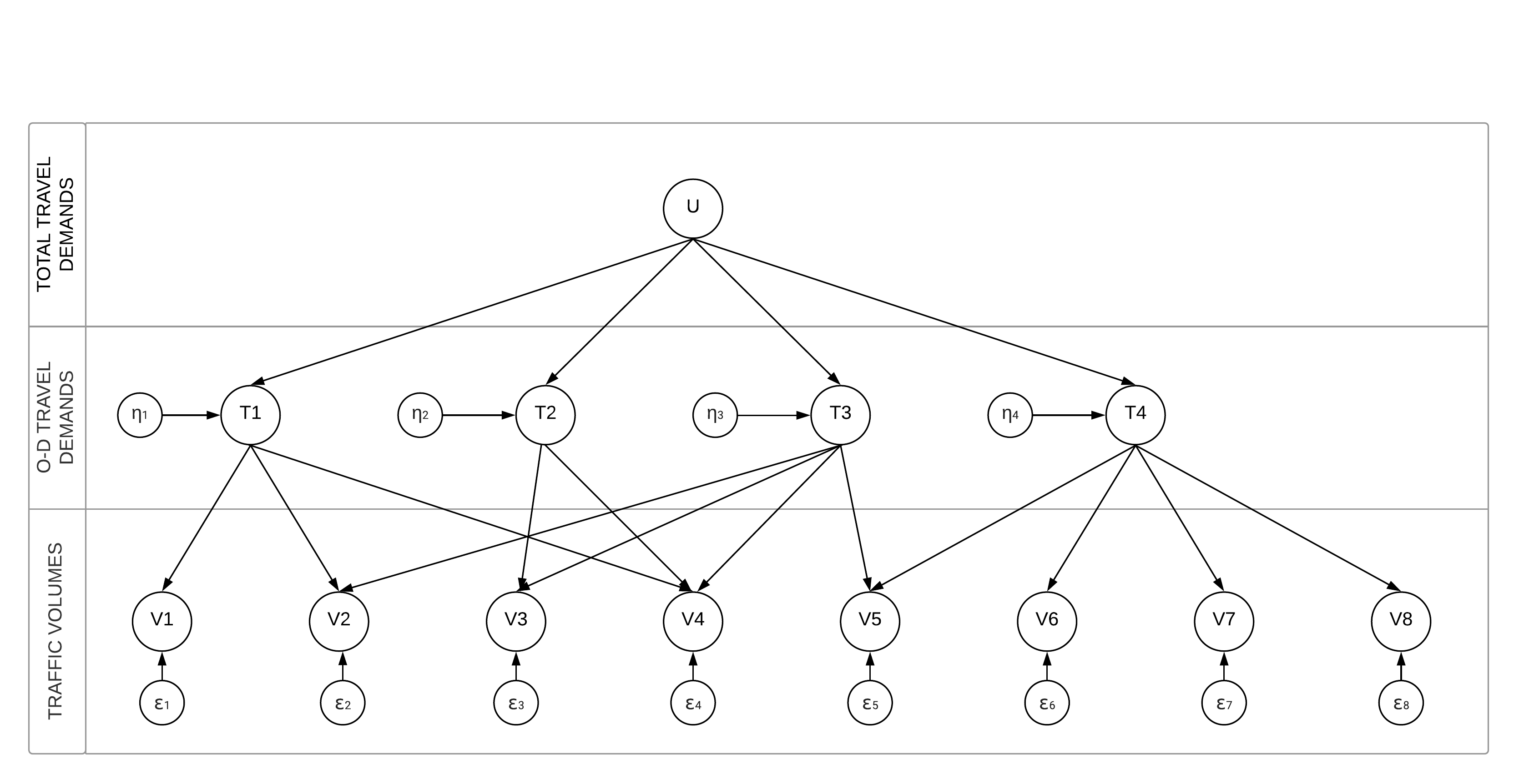Estimates travel demand and traffic in Andorra based on combination of telecom data and limited traffic counts using a Gaussian Bayesian Network model. A JS front end maps the results over time.
This repo contains 3 main components:
The andorraBayesNet.py script reads the pre-prepared hourly "naive" O-D matrices (estimated from RNC telecom data) and some hourly traffic count data for a number of junctions in Andorra. It uses the combination of these data sources to produce calibrated O-D matrices and traffic volume estimates for every road and each hour. There is no need to run this script as the results are already in the data/results folder. This process in described in more detail in the Methodology section.
The appSocket.py script reads the results of the model calibration, produces geojson files and serves them to the javascript front end.
The javascript front end maps the results of the analysis using a keystonable Mapbox map. This projection mapping uses the excellent MapTasticJS lib.
In order to run the visualisation:
- Clone the repository
- Run the appSocket.py script in a terminal
- Open a web browser and navigate to http://localhost:5000/
This framework deals with the problem of estimating travel patterns in a road network based on data whch is incomplete and/or biased. An initial O-D matrix is estimated based on the available telecoms data. This O-D matrix is based on incomplete observations and has inherent biases. However, traffic volume counts provide a reliable source of information in relation to the traffic on a subset of roads. A Bayesian network model is therefore constructed to represent the relationships betwen the O-D flows and the traffic volumes. The Bayesian network model allows the available evidence on traffic volumes to update our estimates about the O-D flows through probabilistic relationships.
By combining the Bayesian network approach with a network equilibrium model (stochastic user equilibrium), the effects of traffic congestion are also taken into account.
This approach is inspired by Castillo's work on predicting traffic flows using Bayesian networks.

